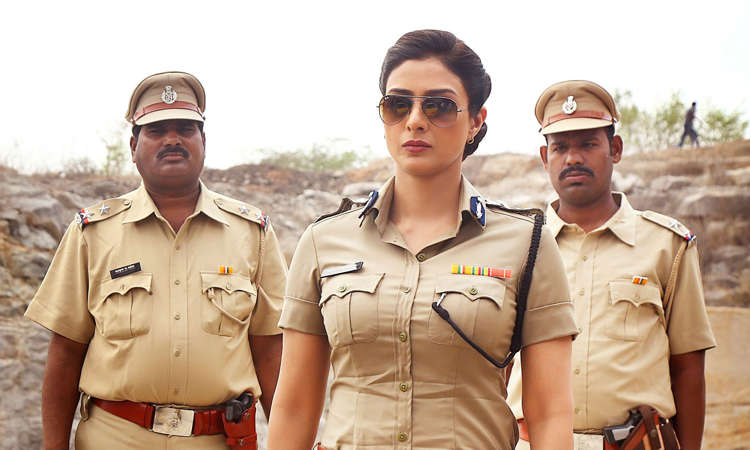Published on: 8/5/2015IST
Drishyam: Five reasons Bollywood needs to watch some Malayalam movies
The Ajay Devgn-Tabu starrer shows up gigantic weaknesses of the Hindi cinema.
Really, Bollywood, you can't even make a decent remake of a good - it is not even great - Malayalam movie. The Hindi Drishyam and the Malayalam Drishyam are both sluggish till the interval and then the plot picks up and moves towards a pitch-perfect last scene. But even in an almost scene-by-scene remake, there are a few things that set the Malayalam apart from the Hindi version and show up some of Bollywood's gigantic weaknesses:
The great differentiator:
What marks the original Malayalam version by Jeetu Joseph is Mohanlal's acting. And, remember, this is Mohanlal past his prime, past his glorious days in the 1980s and '90s when he would not get even a half-wicked smirk or a slight head wobble wrong. You just have to look at one crucial scene in both the movies: when towards the end, Mohanlal/Ajay Devgn meets with the IG and her husband. Mohanlal turns himself into a rock-solid, impervious presence on the screen, and then his body language transforms into a blend of extreme self-containment and unsurpassable remorse. Malayalis, who have seen shades of it in movies like the National Award-winning Bharatam, is used to it, is so used to it, in fact, that they could miss the gravitas and guilt that he is channelling simultaneously. You realise the extraordinariness only when you see bland Devgn, not channelling anything much in the most defining scene of the movie, in the shot that explains and expiates his character.
Bollywood doesn't get lower middle class:
Jeetu Joseph'sDrishyam, a clever reworking of Keigo Higashino's Japanese thrillerThe Devotion of Suspect X, is rooted in the sounds and sights, the anxieties and apprehensions, of a lower middle class family. Mohanlal, a cable TV guy, brings out the nuances of his character - a movie lover, who spends his nights in the office watching films and comes home for a torrid session of lovemaking with his wife; a penny pincher who switches off the lights in the house and loathes to buy a mobile phone for himself or take his family for an outing. Here Mohanlal's world is shrunk to that of the movies he sees. In Nishikant Kamat's HindiDrishyam, the middle class is suitably prettified and even the house doesn't jar you with any signs of middle class distress or depravation: there are porcelain bowls mounted on yellow walls and carved wooden beds. It is Bollywood's inability to show middle class reality that turns the rather ordinary The Lunchbox into a revelatory movie.
Bollywood doesn't get Christians:
The hero of Joseph's 2013 movie is a Christian, George Kutty. Kamat, even when he sets the movie in Goa, where there is no shortage of Christians, turns it into a Hindu film. It is a Hindu Goa. The hero is Vijay Salgaocar, the IG is Meera Deshmukh and the wicked policeman is Gaitonde. There is only Martin running the restaurant Martin's Corner in a corner of the film. In Malayalam, George Kutty goes to a church to create an alibi; in Hindi it is a satsang!
Where are the character actors?
Malayalam Drishyam, for that matter any Malayalam movie, rests on an ensemble cast, with stellar supporting actors who make you wonder why they are not cast in the lead. If Joseph's Drishyam was propped by Kalabhavan Shajohn as the menacing constable, Siddique as the IG's husband and Asha Sarath, who began in television serials, as the IG, and Kozhikode Narayanan Nair as the shop owner Sulaiman, the supporting cast of the Hindi remake falls apart like a house of cards. Bollywood had to drag Tabu to play this role that doesn't do justice to her talent. Tabu tries to bring more shades than Sharath did in Malayalam, but it is as if Tabu's character doesn't get enough screen time to play out the nuance that she wants to bring to the role.
Bollywood doesn't know how to deal with a bad hero (Spoiler alerts):
In the Japanese book, the hero kills a second person to cover up the murder committed by the woman she likes. Jeetu Joseph avoids that kind of extreme devotion that can move one to commit murder. But in the Hindi version, it is as if Kamat cannot even bear to have the hero break the law - protecting his family from going to jail - without throwing in a remark to emphasis his benevolence: that the girl who hits the boy is not Devgn's biological daughter but is adopted by him! It is an unnecessary addition whose only purpose seems to be to balance the hero's character or to even appropriately distance him from the murder. In the Malayalam version, the girl hits the boy on the head in a fit of rage. In the Hindi version, the girl is carefully aiming to knock the phone off the boy's hand - and the rest is an accident. Is it that difficult to acknowledge the shades of dark in people? In the Malayalam film, Mohanlal protects his family precisely because he knows the boy is a police officer's son and the entire police force will come after them. In the Hindi film, the grave mistrust between the ordinary man and the police is blurred. The Hindi hero just cannot be too bad, too dark. Unless it is Shah Rukh Khan
Related:
Things you should know about 'Drishyam'
8/6/2015 | | Permalink


